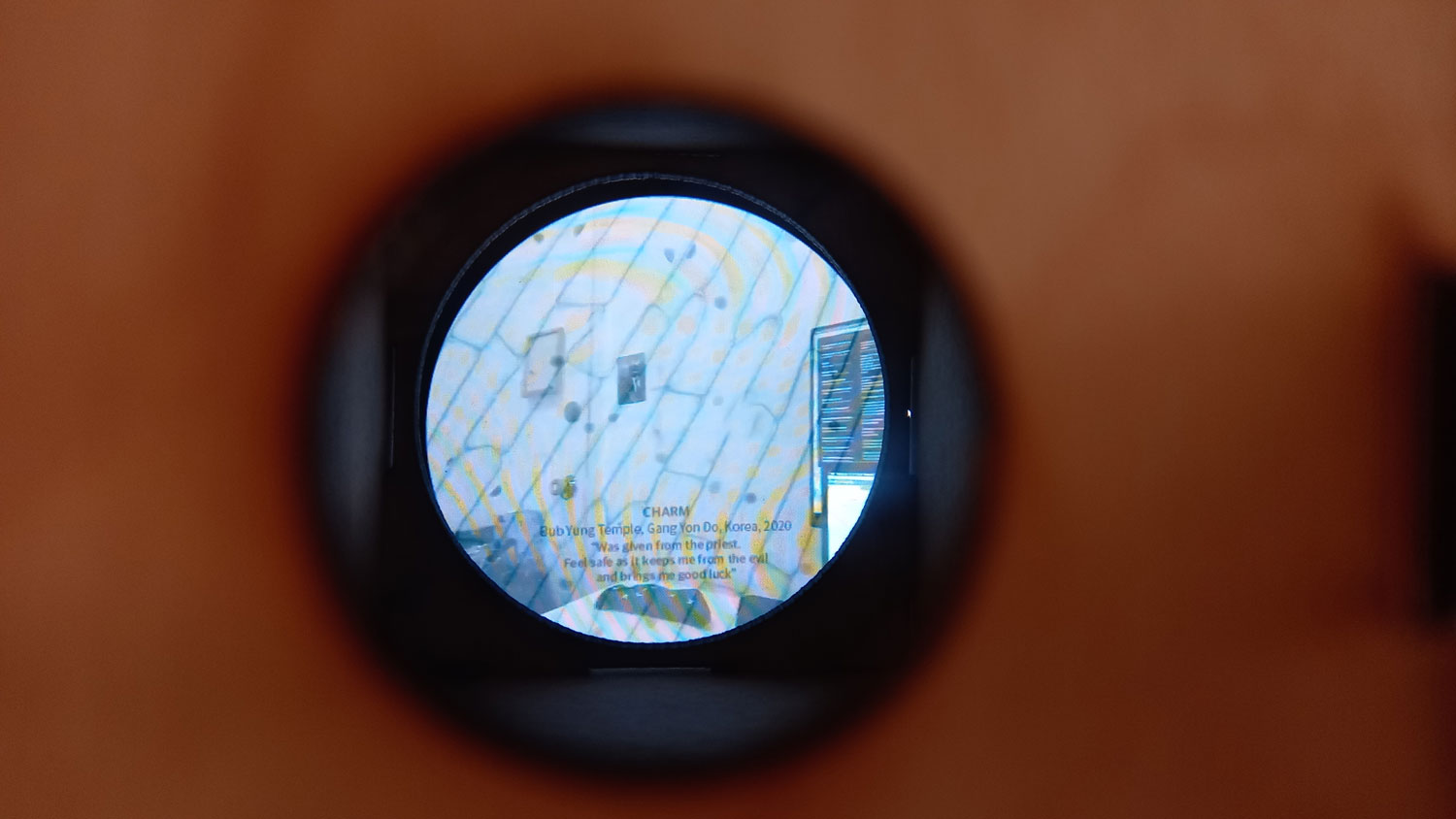Phycomp Final – Microhabitat
Final
Microhabitat
A microhabitat is a virtual home tour that can be seen through a microscope. It welcomes audiences to a tiny room of a person living in NYC.
The tour is not as big and fancy as you see in many Youtubers’ open doors. Comparing the size of the room, it may feel like looking into a small cell that can be only visible via a microscope. It’s a tough and expensive life for most of the young people living in NYC. However, no matter how small the room may be, there lives a person with one’s own unique story and a big dream.
DESIGN
There are two knobs, one changing the angle of the camera and the other responsible for changing the focus of the camera(course or fine). In order to realize the project, communication between two computers is needed. In the beginning, sending and receiving Arduino and p5.js data between two computers looked bearable, which I realized later that it’s not.
Final look of the microscope
Photo on how it really looks like through the microscope
Process
plan a
There are two knobs, one changing the angle of the camera and the other responsible for changing the focus of the camera(coarse or fine). In order to realize the project, communication between two computers is needed. In the beginning, sending and receiving Arduino and p5.js data between two computers looked bearable, which I realized later that it’s not.
Code Plan A(p5.js)
Code plan B(p5.js)
All the Code

Flow video about web RTC and serial communication between the two computers
Process videos
Demonstration on web RTC and serial communication btwn the two computers (knob A and B value from computer A to B)
Delay happening when reading the switch value from computer B
Demonstration on where stepper is attached and how smartphone camera rotates
3D modeling on Fusion 360 to get idea of what and how to laser cut plywood
orther approach
virtual microhabitat
Being physically remote, the web version will allow the audience to get hints on what they will see using the real microscope. (working in progress)
Link to code
Stuffs to touch upon
Reflections and learnings
- Communication between two computers require detailed planning
- Handshake is crucial to prevent piling of data and delays
- Rotary sensors and potentiometers have different feelings and usage. The size and texture of the knob matters
- Interrupt pins: Rotary sensors can’t be connected to any random digital inputs. For Nano33, 2, 3, 9, 10, 11, 13, 15, A5, A7 are the digital pins used for interrupts
- tint(); in p5.js makes a lot of delays. Should be used only once – from personal experience











